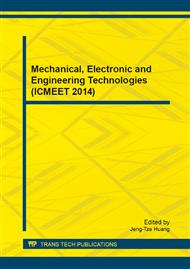p.175
p.179
p.184
p.189
p.193
p.198
p.206
p.210
p.214
Satellite Module Layout Design Based on Adaptive Bee Evolutionary Genetic Algorithm
Abstract:
The main problems for Genetic Algorithm (GA) to deal with the complex layout design of satellite module lie in easily trapping into local optimality and large amount of consuming time. To solve these problems, the Bee Evolutionary Genetic Algorithm (BEGA) and the adaptive genetic algorithm (AGA) are introduced. The crossover operation of BEGA algorithm effectively reinforces the information exploitation of the genetic algorithm, and introducing random individuals in BEGA enhance the exploration capability and avoid the premature convergence of BEGA. These two features enable to accelerate the evolution of the algorithm and maintain excellent solutions. At the same time, AGA is adopted to improve the crossover and mutation probability, which enhances the escaping capability from local optimal solution. Finally, satellite module layout design based on Adaptive Bee Evolutionary Genetic Algorithm (ABEGA) is proposed. Numerical experiments of the satellite module layout optimization show that: ABEGA outperforms SGA and AGA in terms of the overall layout scheme, enveloping circle radius, the moment of inertia and success rate.
Info:
Periodical:
Pages:
193-197
Citation:
Online since:
April 2014
Authors:
Price:
Сopyright:
© 2014 Trans Tech Publications Ltd. All Rights Reserved
Share:
Citation:


